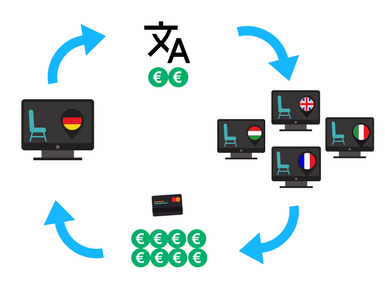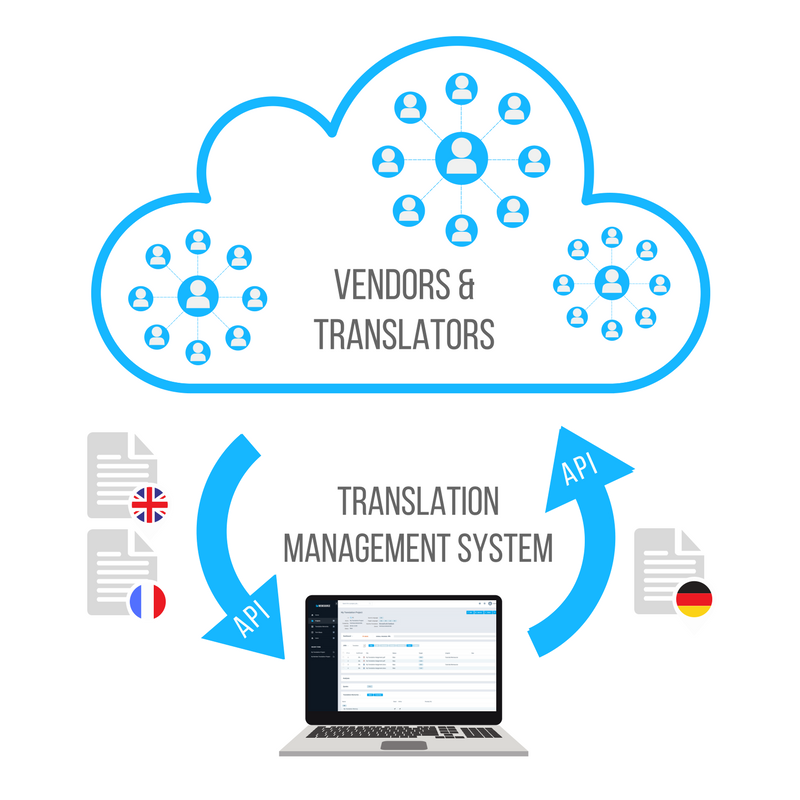
Blog
Machine Translation Report
What is the optimal MT Engine for you? Find out in the latest MT Report by Memsource.

Did you know that around 60% of internet users have purchased a product online? This equates to more than 1 billion online consumers and in the EU the percentage is as high as 68%. Unsurprisingly, consumers are more likely to make a purchase when the web content is in their native language. With such a diverse range of languages and dialects in the EU alone, localizing e-commerce sites is vital for tapping into global markets, but it takes careful planning and consideration to get it right. Some might see this as a drawback of localization and consider it a cost not worth the money and manpower, but visualizing the ROI just requires a big picture mentality.
 We consulted one of our e-commerce specialists, Solutions Architect Ondrej “Urby” Urbanek, about best practices for localization. He suggested integrating a TMS (Translation Management System) as a quick win for companies wanting to capitalize on their localization strategy. Many businesses look at localization as a daunting upfront expense, but the key is looking at it as a long-term investment.
We consulted one of our e-commerce specialists, Solutions Architect Ondrej “Urby” Urbanek, about best practices for localization. He suggested integrating a TMS (Translation Management System) as a quick win for companies wanting to capitalize on their localization strategy. Many businesses look at localization as a daunting upfront expense, but the key is looking at it as a long-term investment.
“E-commerce companies need to consider the small steps that contribute to the overall savings and increase in revenue,” he said, and suggested these four small steps every e-commerce can use to leverage localization.
4 Strategies for Fine Tuning your TMS Localization Process
Use the latest technology
When localizing your content with a TMS, you have the advantage of translation memories and term bases which can reduce the costs of your translations with minimal effort.
“Without a TMS in place, terminology management in translations is very inefficient. You are paying to repeatedly translate content when you could easily remove these costs by using translation memory and term bases,” said Urbanek.
Consider these tools a savings plan – the more you use them, the more robust they become and in the long-run, they decrease the amount of content that needs to be translated so you will continually reap the cost benefits. Term bases allow translators access to approved terms to be used in the translation projects, which will optimize the process by increasing brand consistency, quality control, and reducing time spent post-editing.
Let’s imagine we have an e-commerce company that specializes in furniture. We are based in Germany but want to extend our reach to other parts of Europe. We have made the decision to integrate a TMS into our localization strategy.
Our web content has a lot of repeated text such as, “minimalist design,” or, “available in different colors.” Now that we have access to translation memory and term bases, we don’t have to pay to translate these phrases over and over for every page of content. Once we have translated it the first time, these phrases will be stored in the database and will be automatically reused when they are detected, cutting the cost of translation.
Automation is key
Localization does not have to be a laborious, time-consuming process. Using your TMS will help you streamline your process, which will speed up your time to market and probably reduce your stress levels.
Urbanek recommends using APIs and CMS connectors to increase the efficiency of translation processes by effortlessly connecting internal users and external vendors. “This can save a lot of human hours on manually transferring files,” he said. Automation can even be customized – taking care of smaller tasks within the translation process such as project creation or assigning translators to different workflow steps – so that the user’s specific processes are streamlined.
Back to our furniture e-shop. We now use our CMS connector to drag-and-drop files directly from our TMS to our CMS. With automation, we can reduce our turnaround time on projects by up to 30%. We have been able to improve the coordination of our projects and our workflow has become effortless and efficient.
“When you have an e-commerce business, your focus should be on your business. You shouldn’t have to take care of the server humming in the corner”
Keep it in the cloud
There are many benefits of choosing a cloud-based TMS such as greater scalability, the ability to access data from anywhere, and real-time communication and collaboration with vendors around the world.
There’s another important benefit Urbanek said companies should consider - not having to take care of your server. “When you have an e-commerce business, your focus should be on your website,” he said. “You shouldn’t have to take care of the server humming in the corner. It is an unnecessary burden and an added maintenance expense.” A cloud-based platform will allow you to focus on your core business rather than worrying about desktop and server maintenance.
How does our furniture e-shop see the benefits of the cloud? Well, our cloud-based TMS has made it possible to collaborate with vendors and translators in one location, allowing us to see exactly where we are in the translation process at all times.
Visualize your potential
 Urbanek also suggests considering the ROI that you will see when you invest in TMS. “Think about the cost of translating and localizing one of your product pages,” he said. “Now consider how much more selling capability that product will have outside of your usual market. If you look at it like this, it is easy to justify the cost of a TMS system”.
Urbanek also suggests considering the ROI that you will see when you invest in TMS. “Think about the cost of translating and localizing one of your product pages,” he said. “Now consider how much more selling capability that product will have outside of your usual market. If you look at it like this, it is easy to justify the cost of a TMS system”.
Are you imagining the ROI of our furniture e-shop? Well, you don’t have to imagine, because this example is absolutely real. Connox, a German e-commerce company specializing in furniture and home decor, integrated Memsource into their localization strategy and have seen a 40% decrease in turnaround times and a 20% increase in month-on-month revenue in their French and Danish domains. Learn exactly how they did it, then apply the knowledge to your own localization strategy.
--
Want to find out how you can best leverage your investment in localization? Contact our sales team for a personalized demo or start your free trial today!



